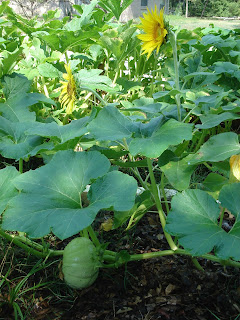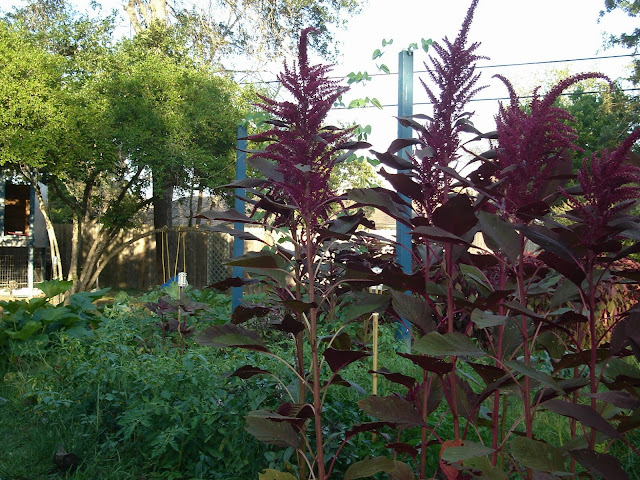The first overnight freeze in the lower Brazos Valley takes place on average during the second week of December. This is the point at which most local gardeners put away their shovels and hang it up until March.
We think this is a big mistake, and not just because it is possible to continue getting tomatoes and peppers – although it is, and it isn’t that hard. No, it’s a mistake because gardening in this not-quite-temperate, not-quite-arid, not-quite-subtropical less-than-paradise is a year round sport, and what one does in winter affects the whole rest of the year.
This is the point in the diatribe when your usual suspects in the “I’m going to tell you how to garden” business start going on about turning over your soil, making it weed free, adding compost, and all that other stuff. Well, some of that is useful, no doubt, but it is not really the direction we’re going with this. We’re more interested in the psychological and philosophical questions which can only be answered by living in the dirt all twelve months of the year.
We aren’t telling you to be perfect; we’re asking you to be aware. Big difference.
To give you some idea of what we mean, let’s go back to those peppers and tomatoes. The first frost of the year happened the last week of September. This being Southeast Texas, we have only had a handful of other frosty mornings since then, and never more than two in a row. Just because it got cool enough once or twice to dust the car windshield with a very thin patina of ice does not mean Old Man Winter is moving in – if you thought it meant that, you must not be from around these parts.
No, it simply hasn’t been that cold yet. But how did our solenaceae survive even this small amount of frost? An exposed tomato or pepper will burn with the tiniest amount of frost, and the jig is up. Well… our tomatoes and peppers weren’t exposed. We let them trail on the ground, not putting them in cages or trellises. And we stopped weeding them after about two or three weeks last Spring, so not only are they crawling along the ground, they are under a rather tall stand of hay – what other folk call “weeds”.
There are those who would call us lazy for not having weeded our gardens last Spring, Summer, or even earlier this Fall. Those people are not eating garden fresh salsa this winter, is what we have to say in response.
There are other reasons to continue living in the garden during December-January-February, of course, which can be exercised regardless of how closely you adhere to the “Do Nothing” farming methods of Masanobu Fukuoka. Broccoli, kale, kohlrabi, carrots, spinach, chard, collards, mustard, garlic, wild lettuce, cabbage… the number of winter greens which go hog wild in a Brazos Valley garden in our so-called “colder” months is almost limitless. And even if you are from the Neil Sperry school of straight row gardening in perfectly weed free, chemically fertilized plots, you can get them to grow. We hope you forego the monotony and the chemicals, but at the very least, we’ll be happy to see you out and about, with dirty fingernails and happy salad plates.
This is also the time of year to be planting fruit trees and berry bushes, and plotting and planning for shifts in the Spring landscape. For fruit in particular, it is important to spend time outside – yourself, physically, in the flesh, standing out in the garden – getting familiar with what your plants are going to be going through. There is no bigger mistake made by prospective fruit gardeners than ignoring the extremes (both high and low) their new plants will be experiencing prior to putting them in the ground. The wrong variety of peach or plum may grow and not produce fruit, or it may produce fruit in one season, and then die to the ground the very next Winter, or shrivel in the heat the next Summer.
The big chain hardware stores are in particular guilty of stocking the wrong varieties of tree for the regions where they will be planted. A perfect case in point is avocadoes – the avocado tree you are most likely to get if you find one at “the big orange store” is a Haas… which is fine if you live in Southern California or Southern Florida. Pretty much anywhere else in the country, though, that is one dead tree the minute temperatures dip below 30° Fahrenheit. You need one of the varieties from the mountains of Guatemala – Fuerza, or Bacon, or any of about a half-dozen others which can withstand temperatures down to about 26° or so… and even then, you’ll need to find a protected warm microclimate within your yard where you can warm the tree up if necessary.
Better still? Plant a tree that is native to your area. Not too many folk in the Brazos Valley have the native persimmon variety, but it would be a solid choice of fruit tree. So would a wild black cherry, though you may need to plant four or five to guarantee you have one which ends up producing fruit. Many people are unaware of this southern variety of cherry, which was once common as far south as Monterrey, Mexico, though it has been driven from its native habitat by environmental changes brought on by development over the last 150 years. Much the same can be said for the evergreen huckleberry (a wild blueberry indistinguishable from the cultivated variety once it’s in your pancake batter), native to Oregon and lowland Northern California, though once found in wild stands in East Texas alongside the more familiar dewberry.
Some non-native plants are nice, too, on the condition that they are compatible with your particular microenvironment. If it grows in Sicily, it ought to do quite nicely in the Brazos Valley – hence the presence in Myrtle’s garden of pomegranates and Arbequina olives. We have met several folk with citron plants that fruit out well; there are some other hardy citrus varieties useful for cooking and juicing which will provide a nice back porch decoration in addition adding flavor to your cooking, and a lovely citrus scent to your outdoor living spaces. If you want comestible oranges, either use a greenhouse, or move to Brownsville, that’s our advice.
The more soil amendments a plant needs – we’re talking about you, blueberry – the less worthwhile it is. That may be our “do nothing” prejudice at work again, but it is our firm belief that what folk really ought to be putting in their garden is not things that they can grow well, but rather things that they have a hard time killing. That is not just because of a persistent preference for inactivity on our part – we intentionally don’t weed much, after all – but rather because life in the 21st century is very, very hard for plant life. No matter how attentive we are as gardeners, climate change and variable availability of sun, nutrients, and water mean that plants more than ever have to be adaptable, or they will perish.
We have interfered enough as a species – we are, after all, responsible for much of the difficulty plants are now in – so asking what we can do to help out is somewhat too little, too late. The best thing we can do at this point is get out of their way. The secret to a happy garden, we frequently tell people, is chicken poop and neglect. We have to do more work to get the chicken poop out there than Fukuoka suggests… but we believe strongly in an active sort of neglect, of which we think he would have approved. It’s not enough just to plant your fruits and veggies and herbs, you have to sit and watch them grow, too. And Winter is a great time to pull up a chair and just be with them.
Happy farming!


































